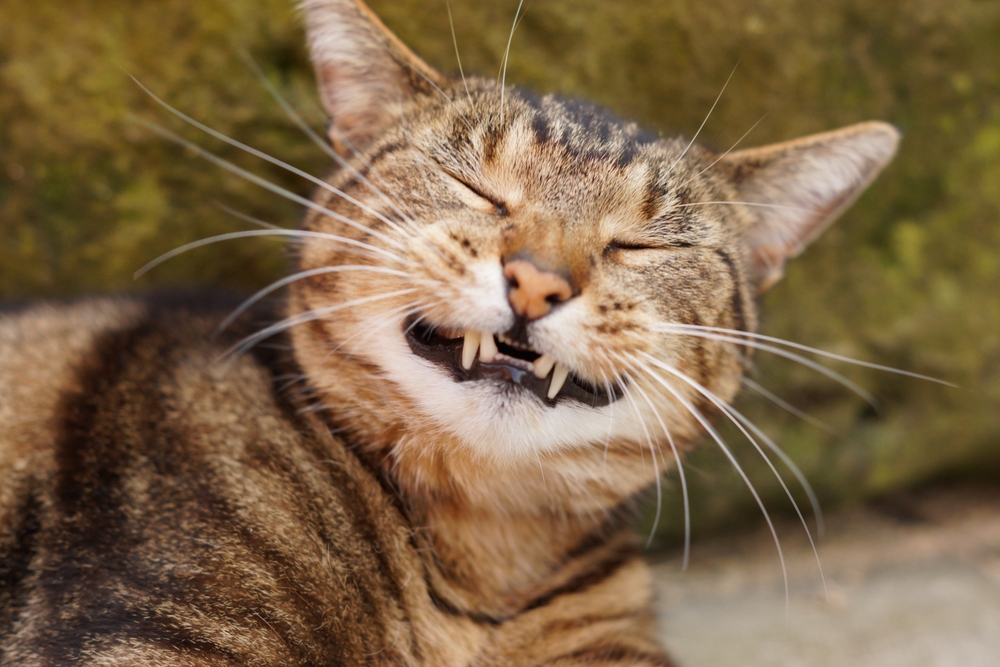Did you know that dental disease affects over two-thirds of cats by the time they turn three? One of the most common yet frequently misunderstood dental conditions in cats is resorptive lesions. These lesions, which can cause pain and tooth loss, often go unnoticed until they’ve progressed significantly.
At Village Animal Hospital in Wichita, Kansas, we specialize in keeping your feline friend’s teeth healthy and pain-free. In this guide, we’ll cover everything you need to know about resorptive lesions, from symptoms to treatment options and prevention tips.
What Are Resorptive Lesions?
Resorptive lesions in cats are a type of dental disease where a tooth’s structure begins to break down. This condition can be excruciating for cats and often leads to tooth loss if untreated. There are two main types of resorptive lesions:
- Type 1: The tooth has visible areas of damage but retains normal structure in other parts.
- Type 2: The damage is more extensive, and the root of the tooth is often replaced by bone.
Understanding these types is essential for determining the most appropriate treatment for your cat.
Causes and Risk Factors
The exact cause of resorptive lesions remains unclear, but research suggests a combination of factors:
- Genetics: Certain breeds like Siamese, Persian, and Abyssinian cats are more prone to developing resorptive lesions.
- Diet: High-acid or nutrient-deficient diets may contribute to tooth decay.
- Age: Older cats are more likely to develop resorptive lesions.
- Immune Response: The body’s immune system might play a role in triggering this condition.
While we can’t always prevent resorptive lesions, understanding these risk factors can help you take proactive steps to protect your pet.
Symptoms of Resorptive Lesions
Cats are experts at hiding discomfort, but there are subtle signs that may indicate a problem. Watch for these symptoms:
- Drooling excessively or pawing at the mouth
- Difficulty eating or chewing, often favoring soft food
- Red, inflamed gums around the affected tooth
- Behavioral changes, such as irritability or avoiding head pats
- Decreased grooming or a scruffy coat
If you notice any of these signs, it’s time for a visit to the vet. Early detection can make a world of difference for your cat’s comfort and overall health.
Why Veterinary Care is Critical
It’s tempting to think that dental issues in cats aren’t a big deal, but untreated resorptive lesions can cause severe pain and lead to more significant health problems. Cats with advanced lesions may develop infections, inflammation, or difficulty eating, which can impact their quality of life.
At Village Animal Hospital, our veterinarians are trained to identify and treat dental conditions like resorptive lesions. Using advanced tools like dental X-rays, we can assess the extent of the damage—even when it’s not visible to the naked eye.
Treatment Options for Resorptive Lesions
Once a resorptive lesion is diagnosed, treatment is tailored to your cat’s needs:
- Tooth Extraction: In most cases, affected teeth must be removed to eliminate pain and prevent further damage.
- Pain Management: Medications or supplements can help alleviate discomfort during recovery.
- Regular Monitoring: Cats with resorptive lesions are at risk for developing new lesions, so ongoing dental care is essential.
At Village Animal Hospital, we focus on providing compassionate, effective care to ensure your cat feels better fast.
Preventing Resorptive Lesions

While some factors are beyond our control, there are steps you can take to reduce the risk of dental problems in your cat:
- Daily Dental Care: Brushing your cat’s teeth with a pet-safe toothpaste can help prevent plaque buildup.
- Dental-Friendly Diets: Choose foods and treats designed to promote dental health.
- Routine Veterinary Check-Ups: Schedule regular dental exams to catch issues early.
- Professional Cleanings: Annual cleanings can remove tartar and plaque that lead to dental disease.
Consistency is key. Regular care goes a long way in protecting your cat’s teeth and overall well-being.
The Role of Regular Check-Ups
Preventative care is one of the most effective tools in managing resorptive lesions. Routine visits to an AAHA-accredited clinic like Village Animal Hospital ensure that your cat receives the highest standard of care. We’re here to help you keep your furry companion healthy, happy, and pain-free.
Resorptive lesions may sound daunting, but with the right care, your cat can lead a comfortable, healthy life. Remember to stay alert to the symptoms, prioritize regular dental check-ups, and maintain a consistent dental care routine at home.
At Village Animal Hospital, we’re passionate about providing exceptional care for every cat. If you suspect your feline friend might be experiencing dental discomfort, don’t wait—contact us at Village Animal Hospital.
For more information on feline dental health, check out this Cornell Feline Health Center article on tooth resorption.








Leave A Comment